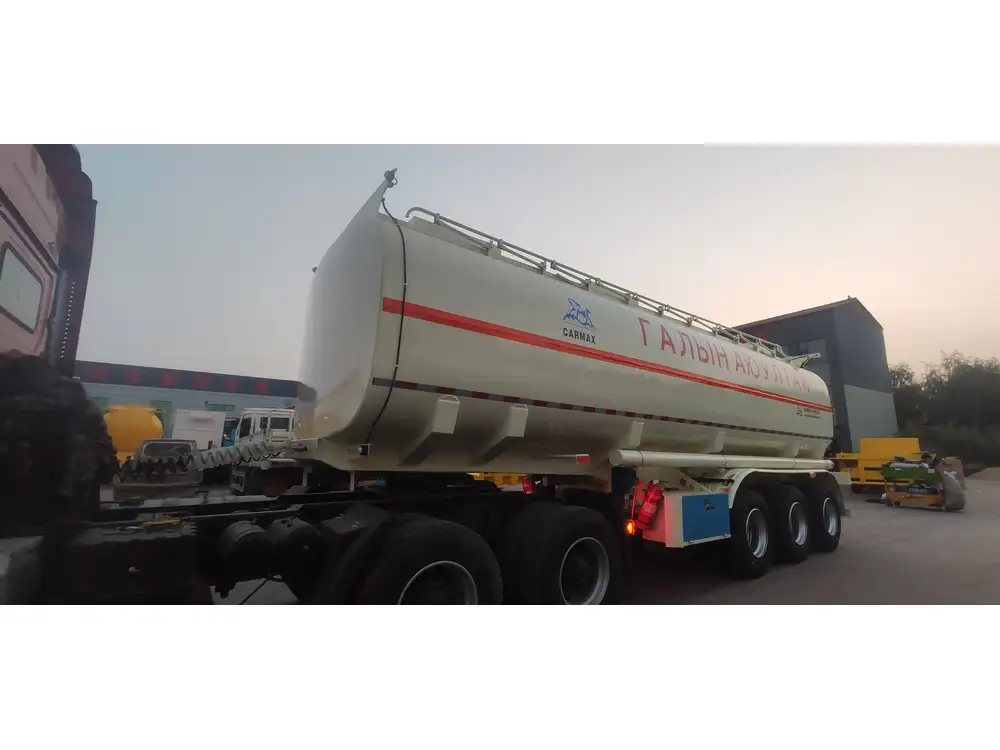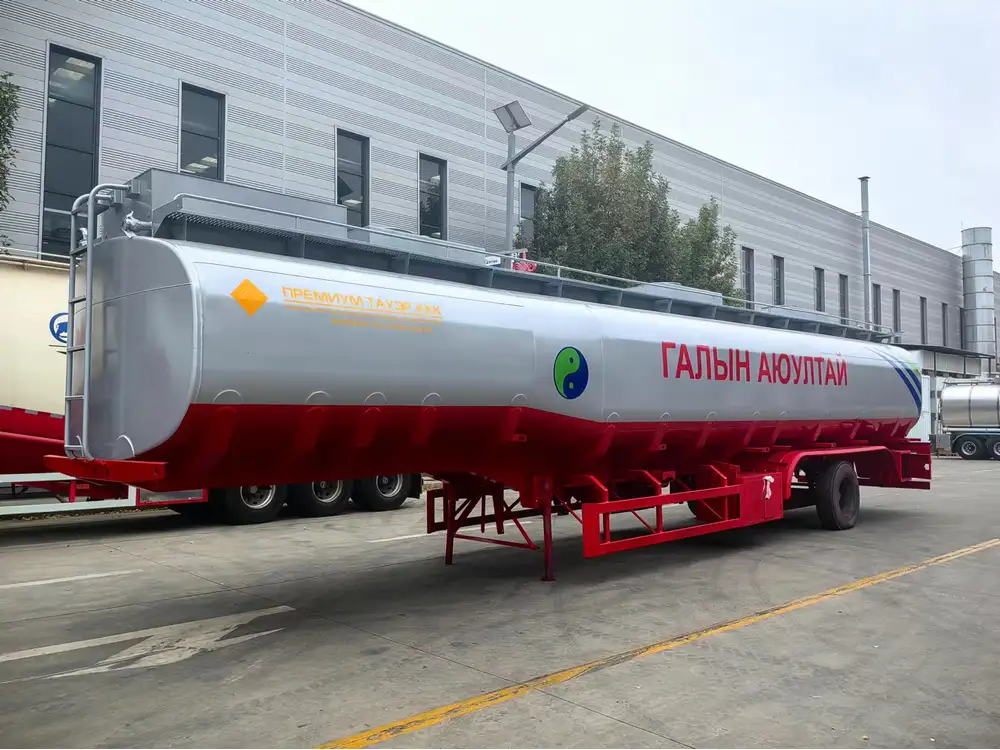In the dynamic realm of petroleum transportation, the significance of bottom loading petroleum tankers cannot be overstated, especially within the context of Benin’s growing energy sector. At CarMax Vehicle, we specialize in manufacturing state-of-the-art petroleum tankers designed to meet the rigorous demands of the industry. In this article, we delve into various aspects of bottom loading petroleum tankers for sale in Benin, encompassing their benefits, specifications, purchasing considerations, and more.
Understanding Bottom Loading Petroleum Tankers
Bottom loading petroleum tankers are engineered to facilitate the transfer of liquid petroleum products in a manner that minimizes spills and enhances safety. This innovative method of loading allows for more efficient operations, particularly in facilities where time and environmental considerations are paramount.
Key Features of Bottom Loading Tanks
| Feature | Description |
|---|---|
| Efficiency | Streamlined loading processes to save time and reduce downtime. |
| Safety | Equipped with automatic shut-off systems to prevent overfilling and spills. |
| Environmental Friendliness | Design features that minimize the risk of leaks and environmental contamination. |
| Versatility | Compatible with a variety of petroleum products, from gasoline to more viscous oils. |
| Ease of Use | User-friendly controls and mechanisms enable smooth operation. |

Advantages of Bottom Loading Petroleum Tankers
The utilization of bottom loading petroleum tankers holds myriad advantages that make them a preferred choice for operational managers in Benin’s petroleum logistics.
Enhanced Safety Protocols
Safety is an intrinsic component of petroleum handling, and bottom loading tankers have inherent design features such as:
- Automatic Shut-Off Systems: These systems engage to stop product flow when specific levels are reached, significantly reducing the risk of spills.
- Anti-Static Grounding: Incorporating anti-static equipment, these tankers reduce the risk of igniting flammable vapors, ensuring safer operations.
Reduced Loading Times
Time is money, particularly in the competitive energy market. Bottom loading technologies can drastically streamline the loading process, offering:
- Rapid Turnaround: Load times can be significantly reduced, resulting in lower operational costs and improved profitability.
- Simultaneous Operations: The ability to load from the bottom allows for multiple operations to be conducted simultaneously, which enhances throughput.

Environmental Compliance
In an age of increasing environmental regulation, bottom loading tankers align with compliance protocols by:
- Minimizing Vapor Emissions: These tankers are designed to capture and recycle vapors, thereby minimizing environmental impact.
- Preventing Spills: Their design allows for secure transport, reducing the risk of leaks during transit.
Specifications of Our Bottom Loading Petroleum Tankers
At CarMax Vehicle, our bottom loading petroleum tankers are constructed with precision and robust materials, ensuring durability and reliability. Below are the salient specifications:
| Specification | Details |
|---|---|
| Capacity | Ranges from 10,000 to 50,000 liters, depending on client requirements. |
| Material | High-grade steel or aluminum for durability and corrosion resistance. |
| Loading System | Advanced bottom loading mechanism ensuring swift and leak-proof operations. |
| Safety Features | Incorporates explosion-proof standards, ensuring compliance with international safety regulations. |
| Dimensions | Customizable dimensions to suit various truck configurations and operational needs. |
Purchasing Considerations for Bottom Loading Petroleum Tankers
Investing in bottom loading petroleum tankers requires a meticulous assessment of various factors to ensure that your decision aligns with operational goals.

1. Assessing Needs and Specifications
Understanding your unique requirements is fundamental. Key considerations include:
- Expected Volume: Determine the daily or weekly volume of petroleum products transported.
- Type of Products: Consider the specific petroleum products that will be loaded, as viscosity and chemical properties can influence tank design.
2. Budget Constraints
Establish a clear budget that accounts not only for the initial purchase but also for maintenance and operational expenses. This should include:
- Financing Options: Explore potential financing options available through manufacturers such as CarMax Vehicle.
- Long-Term Costs: Evaluate the cost-effectiveness of the tank over its lifespan, including maintenance and downtime.
3. Manufacturer Reputation
Partnering with a reputable manufacturer can significantly impact the quality and reliability of the tank. Factors to be considered include:
- Industry Experience: Seek manufacturers with a proven track record in producing bottom loading petroleum tankers.
- Client Testimonials: Real-world feedback can provide insights into the manufacturer’s commitment to quality and service.

4. Regulatory Compliance
Ensure that the chosen petroleum tanker adheres to local and international regulations concerning:
- Safety Standards: Compliance with standards set by organizations such as the International Maritime Organization (IMO).
- Environmental Regulations: Adherence to environmental laws governing petroleum transport.
Operational Best Practices for Bottom Loading Petroleum Tankers
Successful management of bottom loading petroleum tankers involves adherence to best practices that ensure safety, efficiency, and compliance.
Regular Maintenance Checks
Implement a periodic maintenance schedule to:
- Inspect Critical Components: Ensure that safety systems and loading mechanisms are functioning correctly.
- Conduct Routine Upgrades: Upgrade components as necessary to adhere to evolving safety and environmental standards.

Training Personnel
Invest in training for operators and staff to ensure:
- Safety Protocols: Comprehensive knowledge of safety procedures during loading and unloading operations.
- Emergency Response: Efficient response mechanisms in case of emergencies, ensuring minimal risk and damage.
Utilizing Technology
Incorporate advanced technology to enhance operations, including:
- Tracking Systems: GPS and telematics systems for real-time monitoring of tankers during transit.
- Automation Tools: Automated loading systems that improve efficiency and reduce manual oversight.
Conclusion
Navigating the nuances of petroleum logistics in Benin requires an astute understanding of the tools at one’s disposal. Bottom loading petroleum tankers from CarMax Vehicle stand out as a leading solution not only for their safety, efficiency, and environmental considerations but also for their customizable specifications. Embracing these advanced tankers positions businesses at the forefront of the petroleum sector, ensuring both profitability and compliance in a rapidly evolving market.

FAQs
1. What is a bottom loading petroleum tanker?
A bottom loading petroleum tanker is designed to facilitate the transfer of petroleum products from the bottom of the tank, minimizing spills and enhancing loading efficiency and safety.
2. What types of petroleum products can be transported using these tankers?
Bottom loading petroleum tankers can transport a variety of products, including gasoline, diesel, crude oil, and other liquid hydrocarbons.
3. How do I select the right bottom loading petroleum tanker for my needs?
Consider factors such as capacity, type of products to be transported, budget, and compliance with safety regulations when selecting a bottom loading petroleum tanker.
4. What maintenance is required for bottom loading petroleum tankers?
Regular inspections of critical components, routine safety checks, and adherence to a maintenance schedule are essential for the safe and effective operation of bottom loading petroleum tankers.













Reviews
There are no reviews yet.